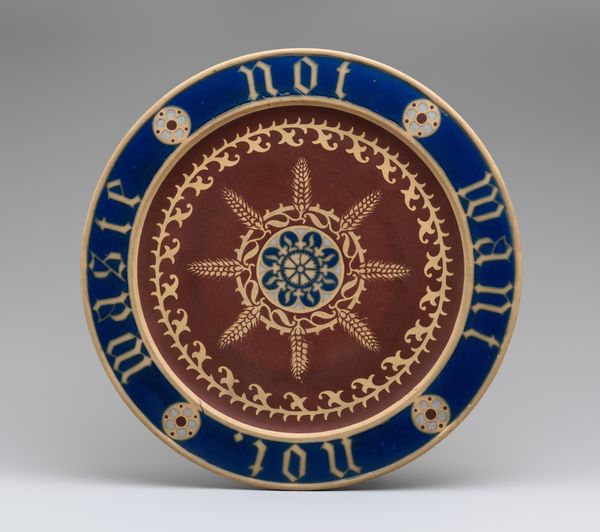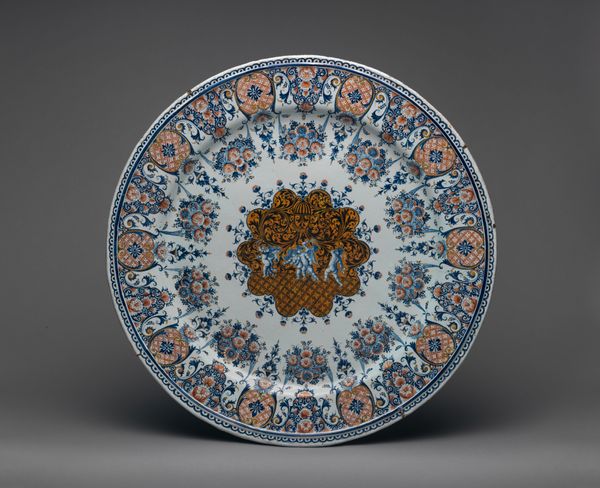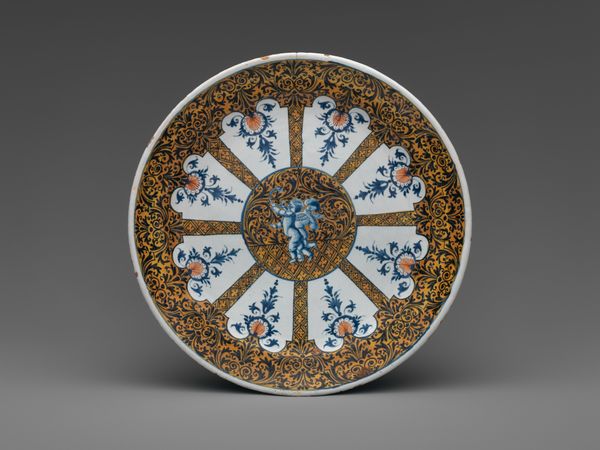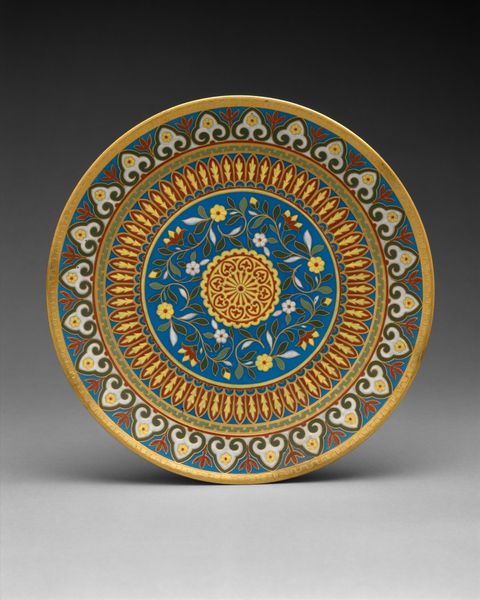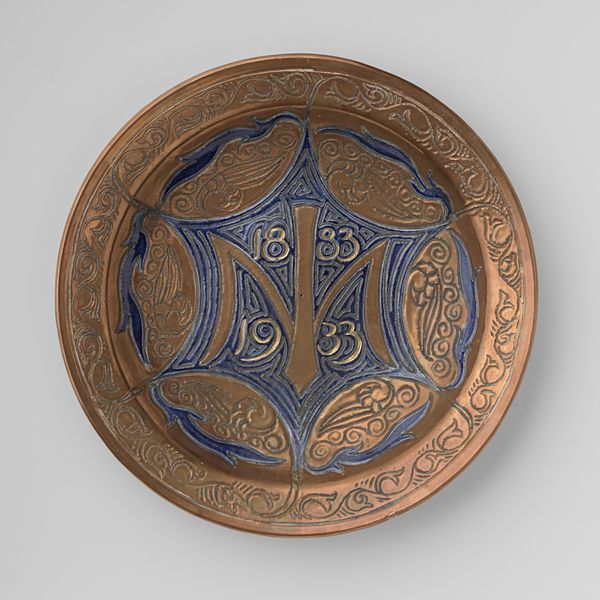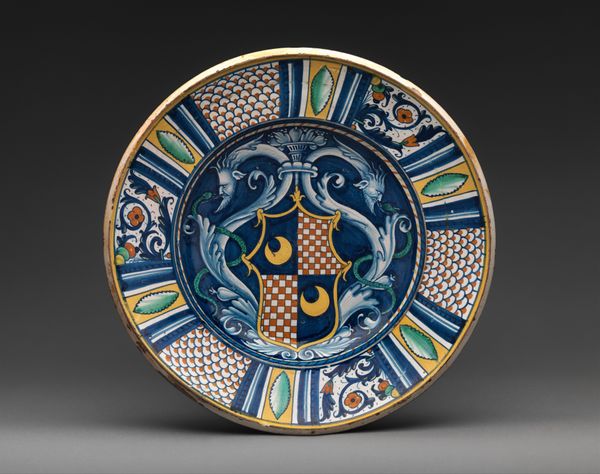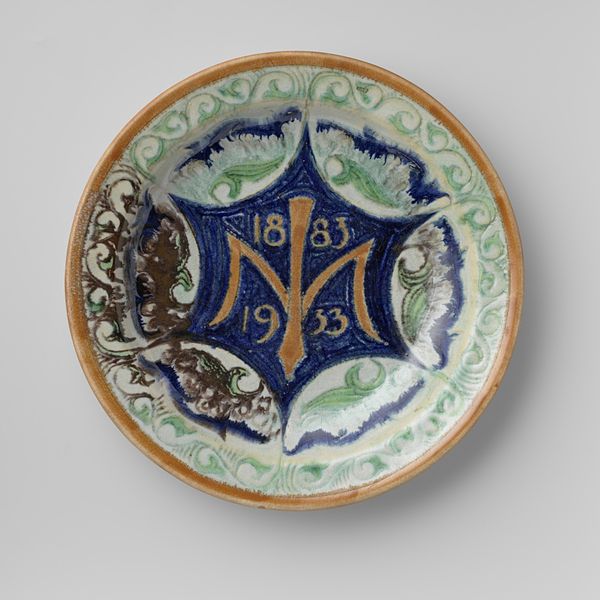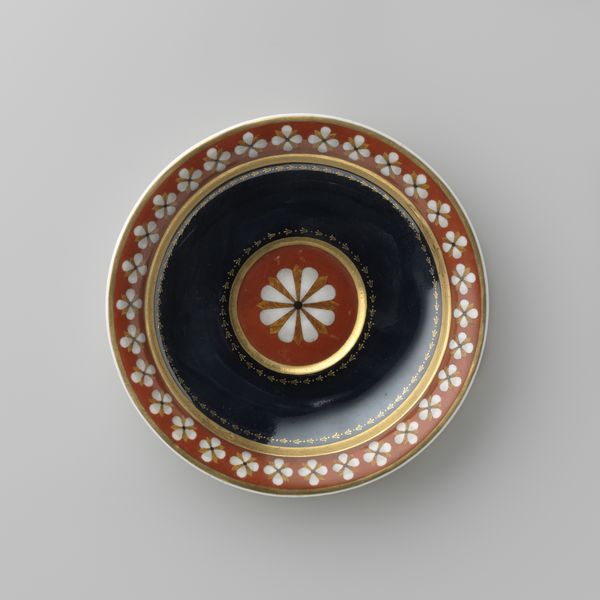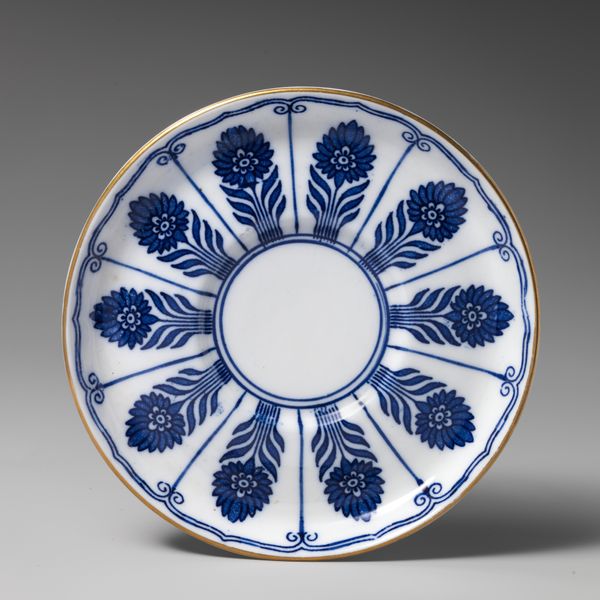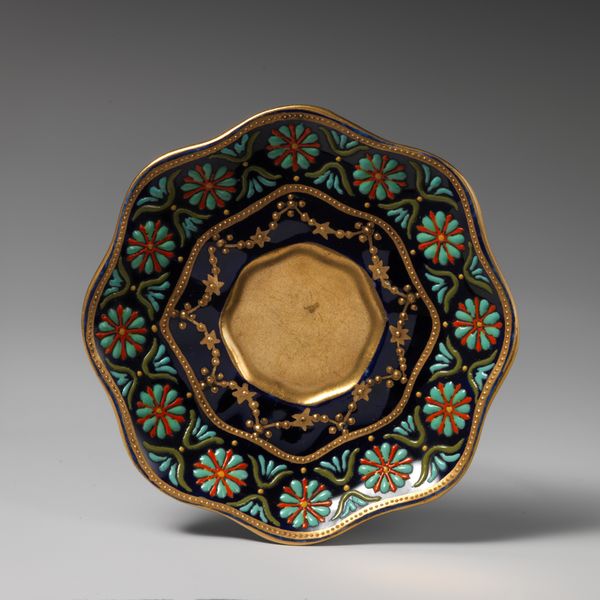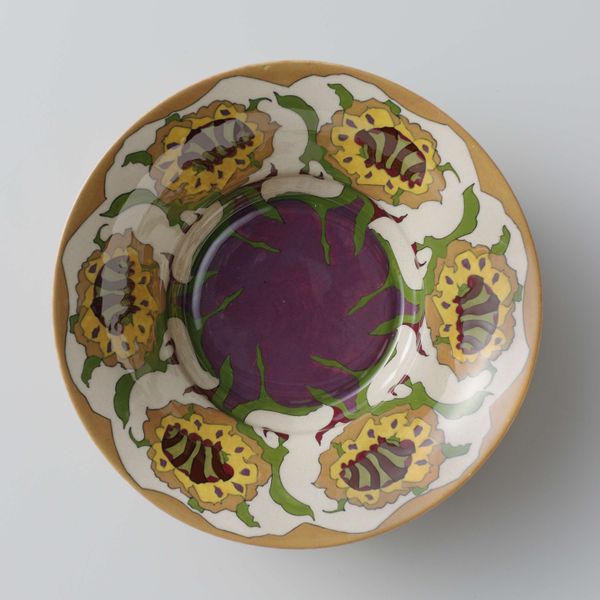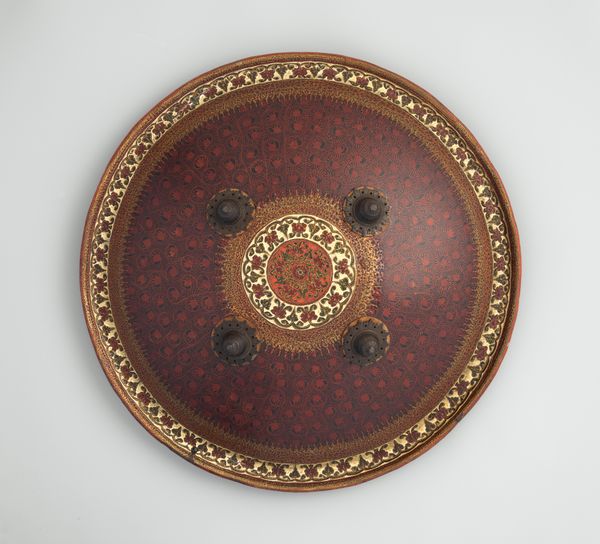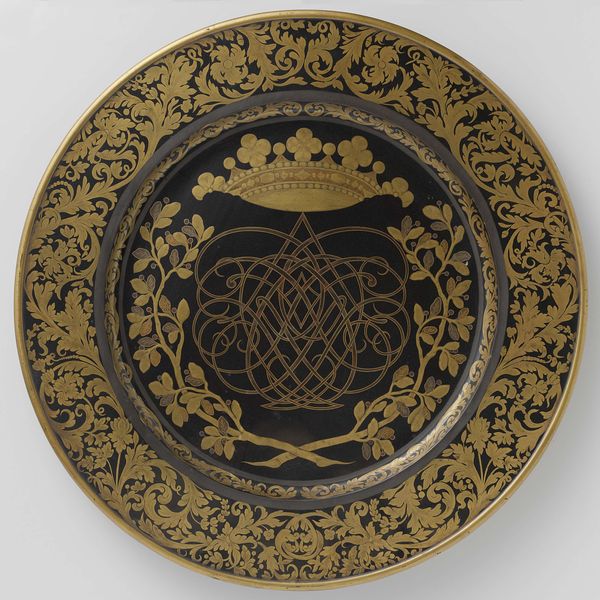
Dimensions: Overall (wt. includes wall mount): 13 1/8 in., 4.7 lb. (33.3 cm, 2.1092 kg)
Copyright: Public Domain
Editor: So this is a ceramic bread plate, dating from between 1845 and 1855, by Augustus Welby Northmore Pugin. The design is pretty symmetrical, with a blue border, wheat, and sort of a gear or wheel motif. What's particularly interesting about the design choices, do you think? Curator: The power of this plate lies in its layered symbolism. Notice the inscription: “waste not want not,” framed by those potent wheat symbols. This phrase is more than just domestic advice. Editor: How so? Curator: In this era, amidst industrial change, the image of wheat became shorthand for both sustenance and a sort of moral grounding in the virtues of agrarian life. Pugin taps into this deep cultural memory. He evokes the Arts and Crafts movement's nostalgia for a pre-industrial past, associating domestic prudence with a sense of stability and continuity in a rapidly changing world. That wheel reminds me of fortune, too! What does that imply? Editor: Interesting. So, it's less about the plate itself, and more about what it represents culturally? Curator: Precisely. It is an everyday object elevated to a statement of cultural and personal values. The repetition of floral motifs and the central wheel act as visual anchors, solidifying these ideas of continuity. What feelings arise in you when you focus on these repetitions? Editor: Now I'm thinking about how the practical act of sharing bread becomes this ritualistic nod to history, memory, and values. The symbols work on different levels. Curator: Exactly. Pugin cleverly interweaves the everyday with enduring values, demonstrating how design can reinforce cultural ideals. Editor: That really shifts my perspective. I had just seen a pretty plate. Now, I recognize this artwork functions as both decor and emblem. Thanks!
Comments
No comments
Be the first to comment and join the conversation on the ultimate creative platform.
